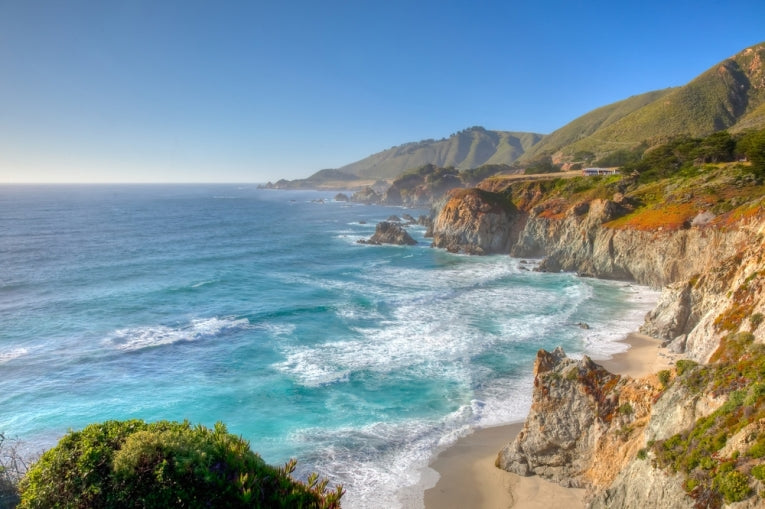The human condition is unique. The species rules its environment more than any other, with metal, wood, stone and liquids and gases too, to aid its domination by chemical and physical means.
However, before the use of any metals, only stones and other organisms were used by early humans. This usage of the environment meant dependence on the richness of the ecology of the coast or the forest. California was apparently always a bio-diverse place as far as the coast and the forests especially were concerned. If we regard the human species as simply a migrating organism, reliant on food and shelter like any other, then the human ecology of western America can reveal itself from a period roughly 12,000 years ago - as the Holocene period began.
There is, or was a dense mosaic of language in the tribes who occupied different parts of the gigantic modern US state. This mirrors the ex-environment of great ecological diversity that these peoples found as they moved down the coast. The most suitable habitats had fish, birds and mammals to hunt in different ways. Later immigrants in the mid to late Holocene had to choose more marginal situations, or if you like, a different niche. This would be around 4,000 to 8,000 years ago.
The Central Valley of California is agriculturally rich nowadays, and, then, would approximate to a rich habitat of woodland and plains around the rivers. People speaking Hokan language and some Great Plains language speakers (Yok-Utian, Takic and Wintuan-Maiduan) seemed to occupy the Sierra Nevada mountains and these lower areas. What they ate would be debateable to some extent, but perhaps it was based on where they originated, with elk-hunters living almost alongside river people.
4,000 years ago, in what is called the Late Holocene, more migration inland took place. The Numic language group penetrated the deserts of Nevada, Utah and SE.California. At the same time, advanced tribes such as the Algic and Athabaskan (often called Na-Dene by modern speakers) language groups managed to replace low density populations travelling from the NW coasts. Nets and weirs, bows and arrows were their tools of the trade as they used salmon fishing almost as an industry to supply their people with an excellent diet. The Klamath and its tributary, the Salmon River are ideally placed and named, for example. These more recent arrivals are related to many prominent native Americans such as the Kiowa-Apache and the Navajo. It has been found that their predecessors on the coast had only hooks and lines and spears. We can see how their technology joins their environmental resources as critical for the culture to survive, as it has. The displacement of early language was non-violent as far as we know, but the migrants then managed to maintain their position, with a larger population, for millennia, until the Spanish and the other Europeans arrived.
The result of all of the migrations was a natural mix and fragmentation of competing groups. It was perhaps the most diverse ethnolinguistic patterns in the two Americas, paralleling what we now find in the island of New Guinea. The Numic language of the Great Plains is used by many different tribes like the Shoshone, Utes and Piutes.
Prehistoric hunter-gatherers migrated from Africa all over the earth and if this pattern was followed, rich language diversity resulted in suitable ecologies, while there remained only low diversity in desert or less satisfactory human situations. Trade, war and inter-marriage spoilt all of this theoretical ecology, but the use of NASA's satellites to pinpoint vegetation types and archaeology to track remains, we should be able to, "help to elucidate why and how humans spread across the planet, creating a patchwork of linguistic and ethnic diversity." The authors are Brian Codding and Terry Jones of the American Museum of Natural History in New York, so they should be safe there from any Californian backlash!
Th paper, Environmental productivity predicts migration, demographic, and linguistic patterns in prehistoric California has been published by the Proceedings of the National Academy of Sciences.










